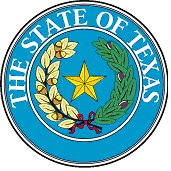
Before teaching the foal the giving of the foot, you must ensure that the foal is well balanced and that you can handle or stroke every inch of the body without resistance. The foal should be well responsive to the lead and stand quietly while being haltered.
To start the lesson, stand facing the foal at it’s front shoulder, turn to face the rear of the foal, then drape the lead rope over your “near” arm (the one closest to the foal) ensuring a foot or two of slack. Run your hands down the shoulder and leg to the foot and attempt to lift the foot with the barest of touch. The foal may lift the foot and if it does, only hold it lifted for a moment before setting it back on the ground.
The foal may not lift the foot and instead, place weight on the foot to resist lifting. It’s normal, as a horse is unbalanced on three legs and feels vulnerable. It’s up to you to teach it to balance on three legs and stand quietly for farrier work or emergencies. To prepare the foal for lifting the foot, continue to stroke the leg and foot while attempting to lift in steadily increasing pressure. If the foal continues to stand on the foot, run a hand up the leg to the “chestnut” just above the knee and squeeze this area with the fingers. This is a nerve point that makes a reflex action of lifting and bending the leg. Capture the foot as it comes off the ground with the other hand and hold it suspended for a couple of moments, then set it back down. The foal may try to pull the foot from your hand. Retain a hold on the foot and ensure you are the determining factor of setting the foot back on the ground. Stand back up and give the foal a few moments to think about what just happened. Then repeat several times, spacing the lessons apart to allow the foal to understand what is being asked for and the fact that it isn’t painful. Repeat the lesson on the other forefoot.
Giving the foot of the rear leg is a little different as even a foal can cause injury here. The automatic reflex of the horse to kick is constructive of three separate movements. First the horse must shift its weight to the front, and then lift the rear leg toward the belly and then project the leg and foot out behind. These are automatic reflexes that we can take advantage of. First, stand just behind the shoulder of the foal at its ribs, and then face towards the back of the foal at about a 45 degree angle. You want to be sure that you can stroke the foal down its flank and butt without injury. Stroke the foal several times and ensure it is calm and quiet.
Next, stroke the foal’s butt and continue the movement down its leg to its foot. Some foals will raise their leg toward their belly in the first part of the kicking movement and you can capture the foot and just hold it at this point. (It’s called “cocking the hammer”.). Hold the foot slightly elevated toward the belly for just a few moments and then set it back down again. Repeat several times.
If the foal stands on the rear leg/foot, simply lean your weight into the foal at the flank and press on the knee joint while lifting the foot. Hold quietly for a few moments and then set the foot back on the ground. Repeat several times, and then do the same on the other rear leg.
Remember patience is the key. Stay calm and be patient and remember you are teaching a young foal lessons on proper behavior, just like teaching a young child. A horse always learns something from it’s interactions with people, whether it’s the right thing or the wrong thing is up to you. NEVER EVER approach a horse or foal in anger. ALWAYS walk away if you feel yourself getting angry.
YeOldFurt












No comments:
Post a Comment